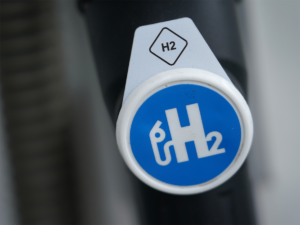Hydrogen rules leak, solar job losses, battery prices plummet — This Week in Cleantech


This Week in Cleantech is a new, weekly podcast covering the most impactful stories in cleantech and climate in 15 minutes or less. Produced by Renewable Energy World and Tigercomm, This Week in Cleantech will air every Friday in the Factor This! podcast feed wherever you get your podcasts.
This week’s episode features Inside Climate News reporter Dan Gearino who breaks down plummeting prices for batteries, and why it’s good news for the climate.
This week’s “Cleantecher of the Week” is Ryan Quint, Director of Engineering and Security Integration at NERC. He has done some outstanding work along the path of improving power system reliability and enabling higher shares of renewables to be reliably integrated into North American power systems. You can hear more about Ryan in Episode 67 of Factor This!
This Week in Cleantech — Dec. 8, 2023
Draft Treasury guidance for the hydrogen tax credits in the IRA leaked this week. Under these rules, tax credit eligibility would require hydrogen production to be powered by wind, solar, and other clean energy sources built within the past three years. The guidance would also require that energy come from the same grid where hydrogen is produced on an annual basis through 2027, then on an hourly basis starting in 2028.
Environmentalists argue that if the rules aren’t strict, it could increase reliance on fossil-fuel electricity. While hydrogen’s storage capabilities and ability to provide energy during lulls in wind and solar power make it valuable, its production demands significant energy. Using natural gas for hydrogen production would result in a higher carbon footprint than directly using natural gas.
The California Public Utilities Commission cut the value of electricity solar homeowners add to the grid by 75% through new net metering rules that went into effect in April. The change has been really tough on the residential solar industry. The economics for homeowners to make the switch just got a lot worse in what’s historically been by far the biggest state for residential solar. As a result, sales are down and we’re seeing tons of layoffs.
Things are not looking up for residential solar – The California Solar & Storage Association predicts that by the first quarter of next year, 17,000 residential solar jobs will be lost. Regulators and big utilities argue that this was necessary because the old rules unfairly “shifted costs” from those who have the right type of home, have a large electric bill, and can afford solar to everyone else.
EV companies will have to build new supply chains for battery components and minerals outside of China or else they will soon lose eligibility for the IRA’s $7,500 consumer EV tax credit. Starting in 2024, the restriction applies to battery components, and from 2025, it includes lithium, cobalt, graphite, and nickel. Some EV companies who have qualified for the credit in the last year will lose it after these rules begin.
The challenge for U.S. officials seeking to diversify the supply chain is that lots of mining, refining, and component manufacturing for EV batteries happen in China because some of the minerals that batteries require aren’t found elsewhere.
Watch the full episode on YouTube
Many Americans are hesitant to buy EVs because of so-called “range anxiety”; they want to be more confident there will be charging infrastructure wherever they need it. Even now, projected EV demand means we’ll need six times as many chargers on U.S. roads by the end of the decade.
In 2021, Congress agreed to put $7.5 billion toward thousands of EV chargers across the U.S., but not a single charger has been made. Delays are likely caused by the challenge of creating new programs in each state and coordinating with the private sector to meet reliability standards. Twenty-seven states and D.C. have yet to even request bids from this funding. Only Ohio and Pennsylvania have used this funding to begin charger construction.
Due to tech improvements, economies of scale, and dropping raw material costs, the global average price for a lithium-ion battery pack dropped from $161 per kilowatt-hour to $139 per kilowatt-hour in the last year. It’s predicted to continue declining, reaching an average of $113 in 2025 and $80 in 2030. That’s according to a new BloombergNEF battery price report.
The goal here is to make EVs less expensive than gas-powered vehicles, which the auto industry thinks will happen when the average price dips below $100. This report projects that will happen in 2027.
Help make This Week in Cleantech the best it can be. Send feedback and story recommendations to rew@clarionevents.com. And don’t forget to leave a rating and review wherever you get your podcasts.
Join us every Friday for new episodes of This Week in Cleantech in the Factor This! podcast feed, and tune into new episodes of Factor This! every Monday.
This Week in Cleantech is hosted by Renewable Energy World senior content director John Engel and Tigercomm president Mike Casey. The show is produced by Brian Mendes with research support from Alex Petersen and Clare Quirin.




